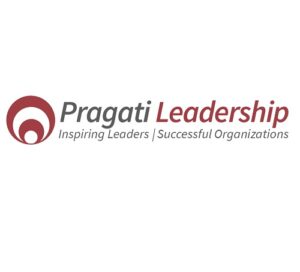
Key To Transforming Organizational Culture
In this fast-paced business world that we live in, cultivating company culture is not something to be taken lightly. Having a healthy and high performing culture that adapts and evolves with change is often what sets thriving organizations apart from those who can just barely keep their head above water. But in these organizations where the CEO is the most ever-present, all-in-one driving force, and face of the company. They’re also the ones whose judgment will shape, influence, and enshrine the cultural ethos. But building a pattern of culture that serves the goals of the organization and the dynamics of contemporary workplaces is more than an instinct, it is a purposeful journey and a strategic evolution. That’s where CEO leadership development training programs step in, empowering leaders to spark cultural transformation.
How Culture Gets Shaped, And The CEO’s Role
Company culture is driven from the top. A CEO’s vision and actions, and decision-making, dictates the tone for the entire organization. All policies, processes, or strategies are viewed through the lens of the cultural values of the organization and the CEO serves as the beacon for those values. Employees look to their leaders for direction about what behaviors are acceptable, how to respond to challenges, and how success is defined.
While this makes CEOs the most influential people in the company, many still find it difficult to create an actual culture that reflects their vision, let alone one that matches up to the company’s strategic goals. In many cases this disconnect stems not from a failing of resolve, rather a dearth of the skills to turn a concept into a lived experience for an employee base.
CEO Leadership Development Training: A Cultural Difference-Maker
Changing company culture takes more than great leadership. It requires a deep understanding of human dynamics and strategic foresight, as well as the ability to influence and inspire at every level of the organization. CEO training takes leadership development to the next level, zeroing in on the finer points of culture-building. These programs prepare CEOs with:
1. Emotional Intelligence And Self-Awareness
To influence others, you need to understand yourself. A big part of CEO training is to help leaders understand their own biases and strengths and blind spots, so they’re better able to model the behaviors that create trust and inclusivity.
2. Vision Alignment
Training allows CEOs to declare a clear and compelling vision of the culture they want, a vision to which employees rally. A unified vision keeps mixed messaging at bay and ensures cohesion among teams.
3. Three-Layered Command Of Strategy Formation
Senior leaders require a far-sighted plan to weave culture into the fabric of every HR process, from hiring to performance evaluation, to drive a culture change that will stick. Training programs complement those initiatives and provide working parameters for integrating cultural values into day-to-day operations.
4. Change Management Skills
Cultural change is about breaking up entrenched habits and pushing past inertia. The training is specifically designed with this challenge in mind.
5. Leading And Motivating Teams
Leaders need to motivate employees to follow and adapt to the cultural shift, mainly by leading from the front. Leadership training emphasizes communication techniques and motivational strategies that empower CEOs to be effective cultural ambassadors.
How Training The CEO Has A Ripple Effect
The effects are also far-reaching when a company CEO undergoes training to create a cultural shift. Employees feel greater buy-in as they see an active commitment to both a positive and an inclusive work environment. Decision-making is more uniform and aligned with the company’s values. As a result, the organization grows stronger, fortified to respond to outside events without losing who they are. The benefits extend beyond these internal operations. When a company’s values align with its culture, everything resonates so well internally and externally that it increases the company’s brand value, improving its appeal to clients, partners, and potential employees.
A Long-Term Investment: Pack Your Bags For Cultural Transformation
Though training is a powerful enabler, culture change is not a one-time event; it’s an ongoing journey. It is an ongoing process that takes ongoing commitment, continual redirection, and a willingness to pivot as the organization matures. Through a holistic leadership training program, CEOs are not only trained to combat the superlatives of today but are also groomed to make the future.
Through their commitment to personal development and strategic leadership, CEOs can also become the architects of a culture that fuels innovation, inclusivity, and sustainable success. This approach of a cultural transformation program enables organizations to have the right strategies in place to foster behaviors aligned with vision and values.
And a legacy is what leadership is all about. Nothing beats the legacy of a successful company culture that encourages their people to do their best. Companies can realize their full potential and turn things around through CEO training programs and cultural transformation programs. Real leadership is not about authority; it’ s about influence, vision, and the desire to help create a better future.
